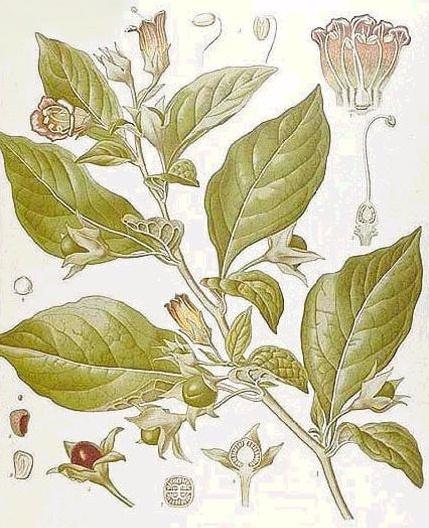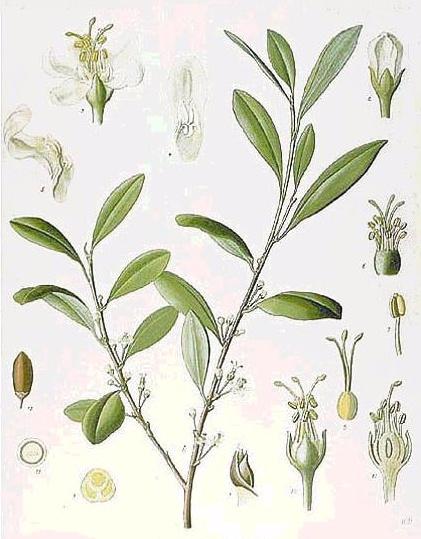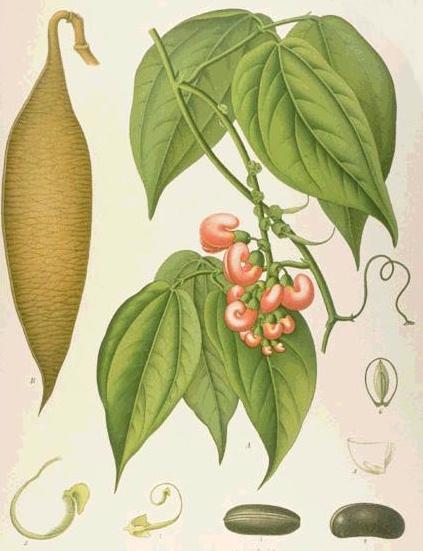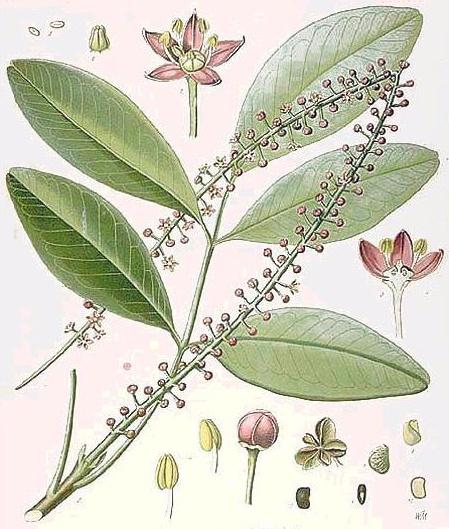 |
Its name in Italian means beautiful
lady. Women of fashion used to drop juice from the berry into their eyes
to dilate their pupils and make them more attractive. It is used widely
in ophthalmology for cycloplegic refraction, post-trabeculectomy and severe
uveitis.
Return to the
top
Return to the main page
|
This plant contains tropane alkaloid.
It is used as a medicinal, psychoactive and ritual plant featured in the
origin myths of many South American tribes. Fresh or dried powdered leaves
are held in the mouth (not
chewed or swallowed) in countries of origin to relieve fatigue and
hunger.
The extract was once used as topical anaesthesia for
eye procedure. Nowadays, its used in ophthalmology is restricted to
confirming Horner's syndrome and in dacryorhinostomy to reduce nasal mucosal
blood loss.
Return to the
top
Return to the main page
|
 |
 |
The bean of this plant contains powerful anticholinesterase
effect. It was used in the "ordeal by poison" in the Calabar Province of
Nigeria. In this ritual, an accused person drinks a solution of poisonous
beans, dying if guilty and apparently surviving if innocent. The success
of the method may be based on the probability that innocent people will
tend to gulp the entire drink, causing vomiting and expulsion of toxins
while the guilty are perhaps more likely to sip cautiously and thereby
ingest more poison.
The extract of the bean was used in treating
glaucoma and marginal corneal ulcer. Nowadays, its use is confined mainly
to systemic treatment of myasthenia gravis.
Return to the
top
Return to the main page
|
This South American plant is
the source of an important alkaloid. The medicinal uses of this plant were
introduced to Europe in about 1873 by Symphronio Courtino (1832-87) a Brazilian
physician. Adolf Weber (1876) of Darmatadt was the first to recommend its
use in the treatment of glaucoma.
Return to the
top
Return to the main page
|
 |